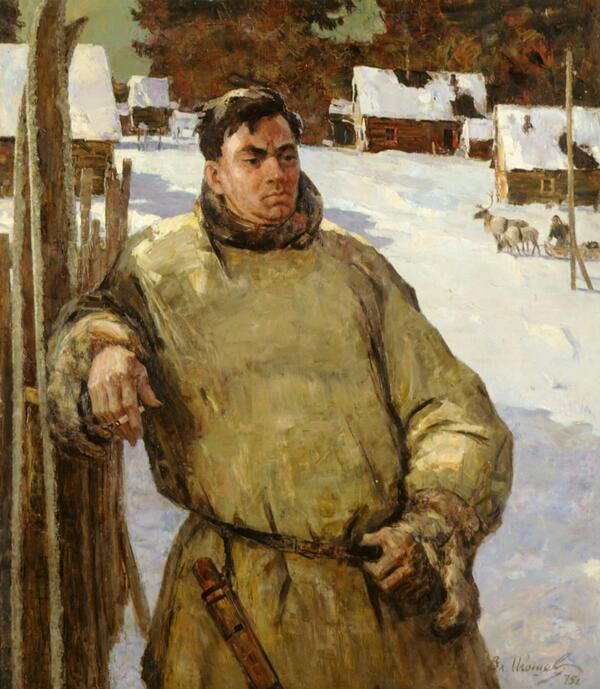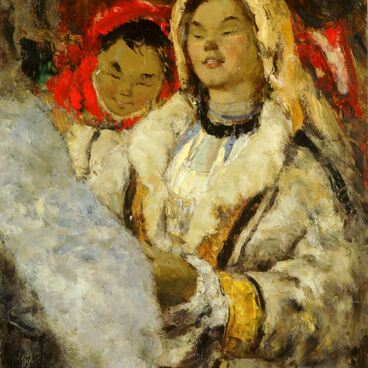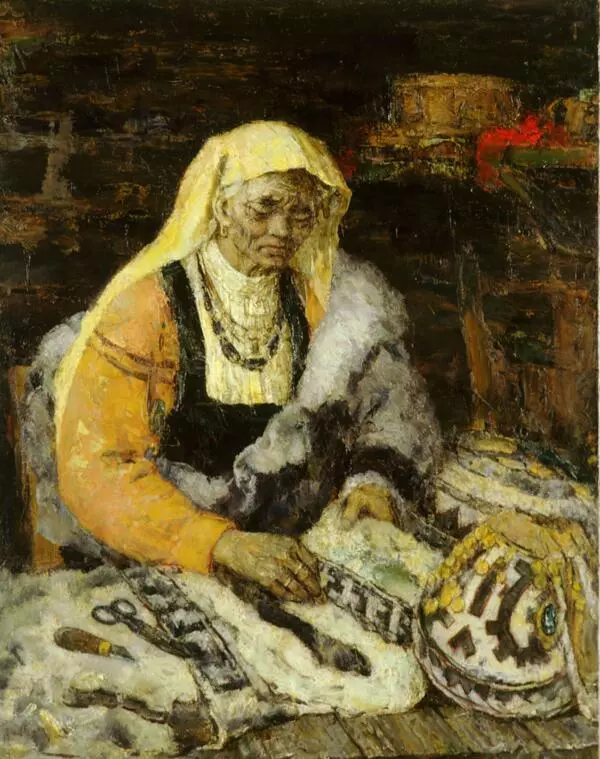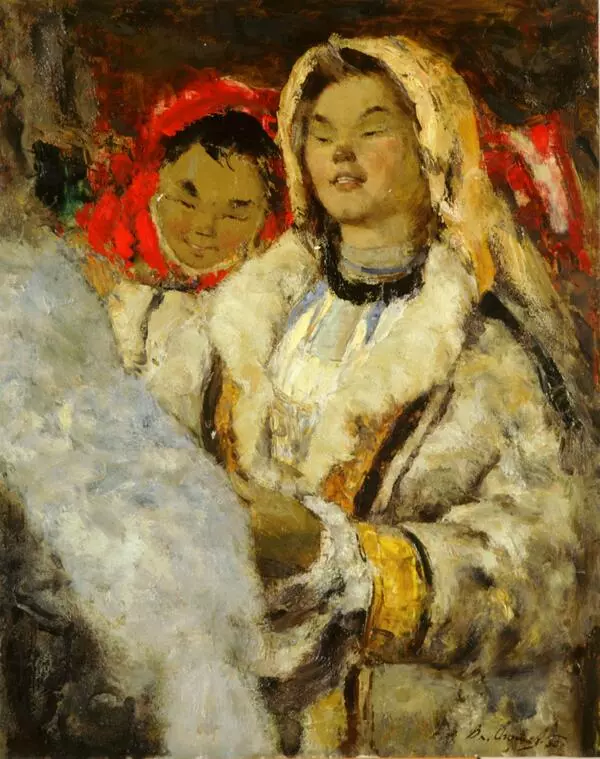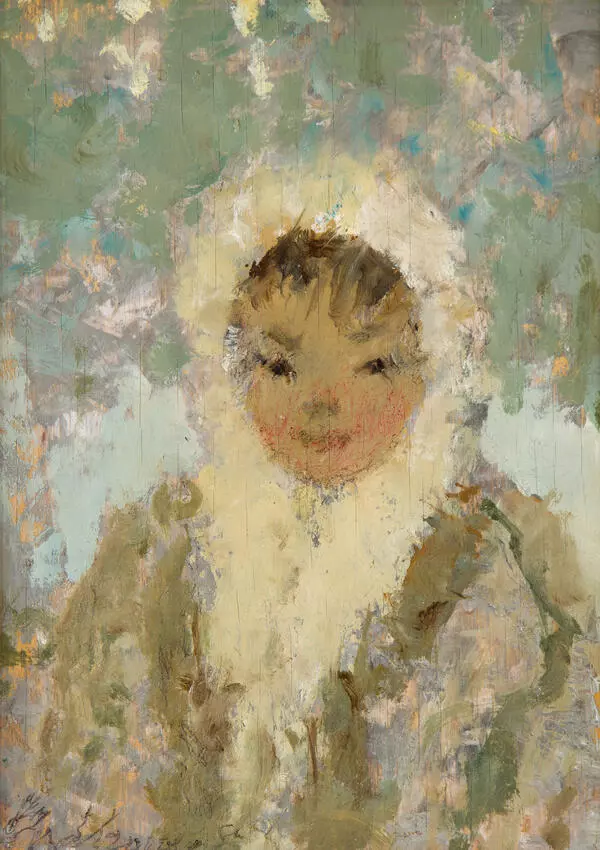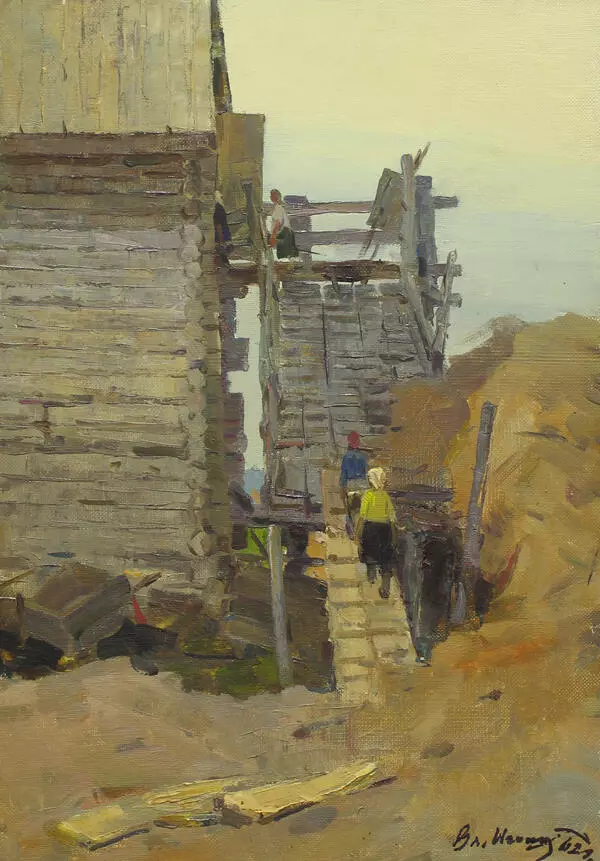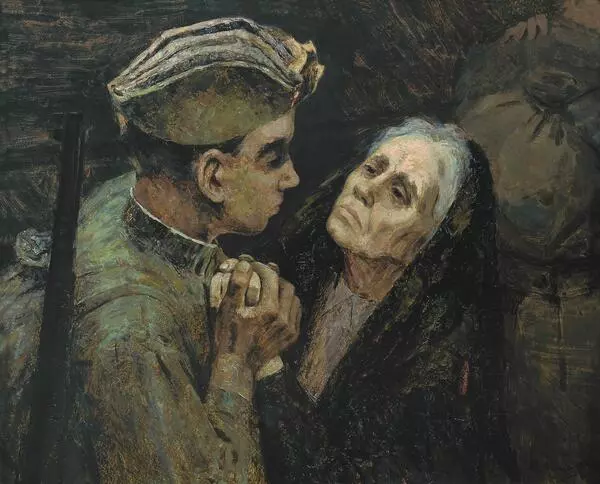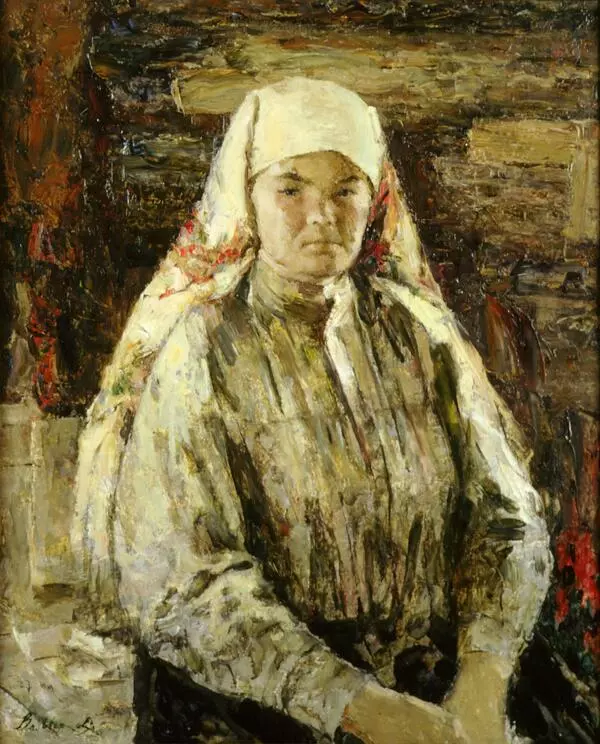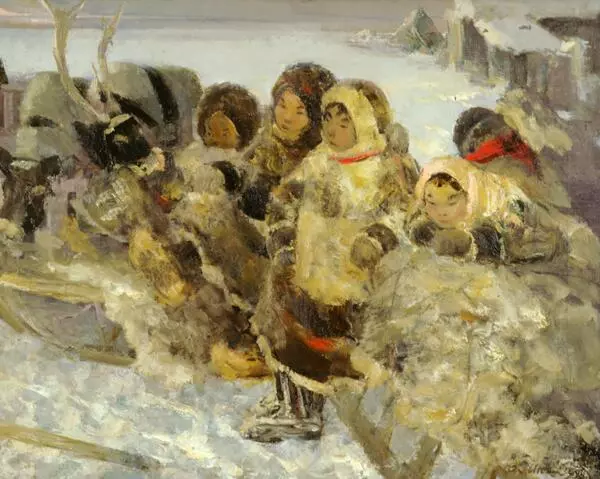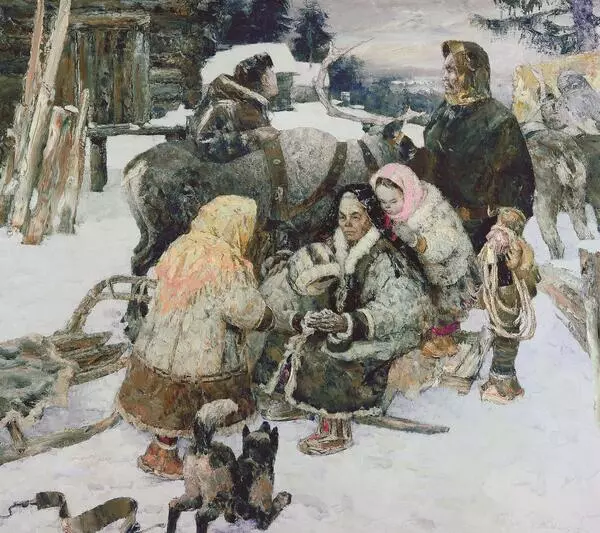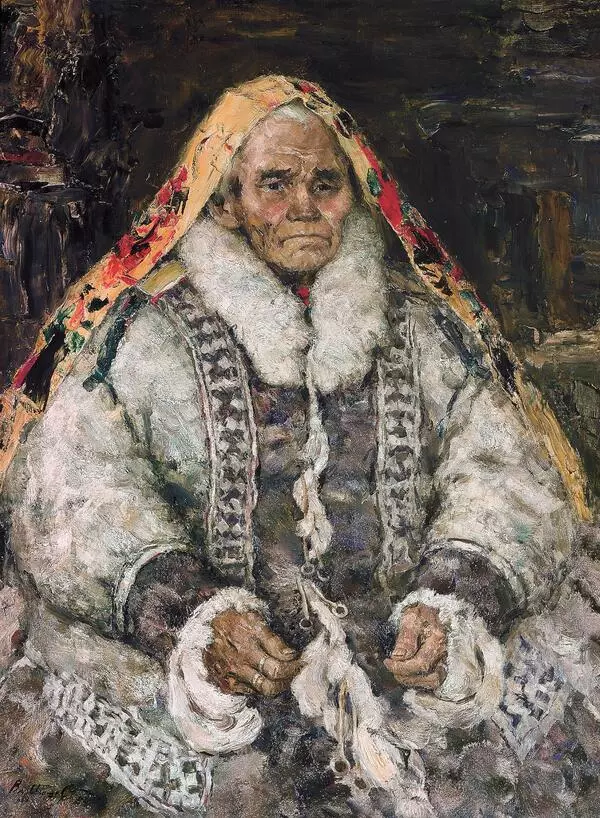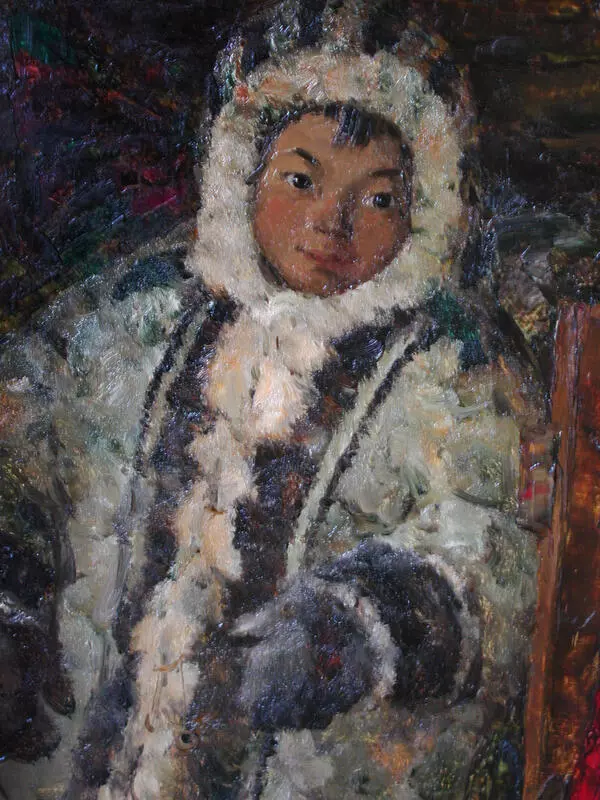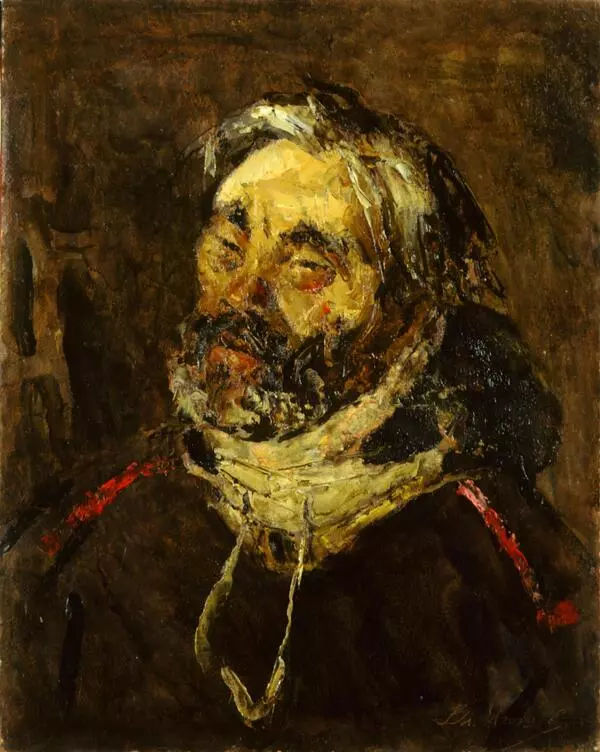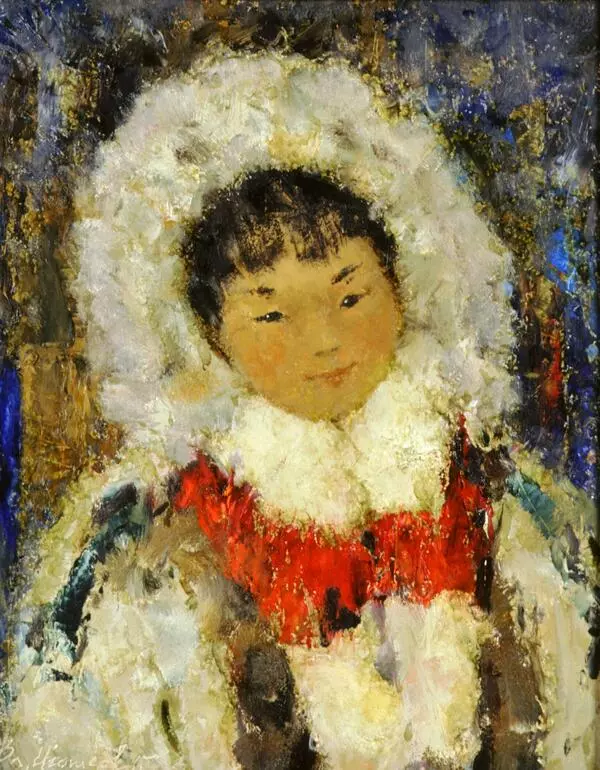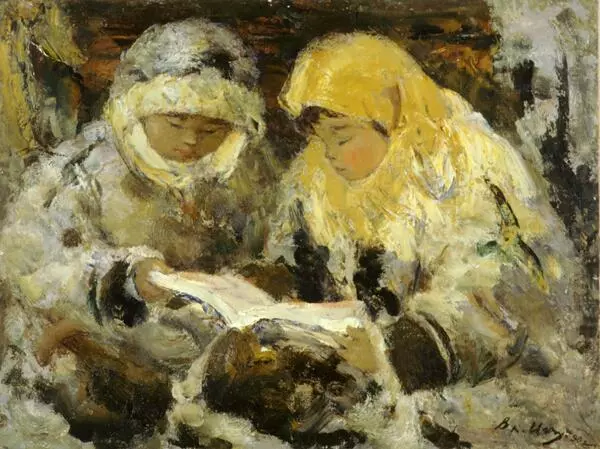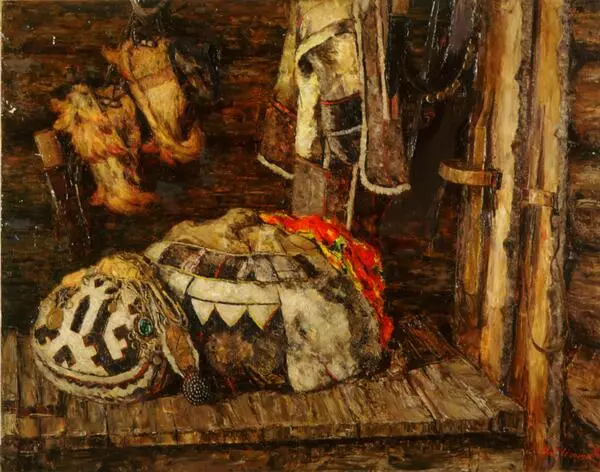The artist Vladimir Igoshev first visited the North in 1954. Later on he often went on expeditions with geologists to the far corners of the Northern Urals. In order to depict the beauty of the region in his paintings, the artist had to use helicopters, small planes and sleighs pulled by reindeer for transportation. The painter brought a lot of sketches from these expeditions, and some of the paintings were created en plein air. The painting Portrait of V. I. Nomin was made in 1975-1977. Vladimir Igoshev depicted a picturesque Mansi man with the Northern village in the background.
National clothing is a perfect example of all nations’ folk culture. In the painting the functionality, which is one of the most important advantages of the Northern peoples’ clothes, is underlined. It lacks decoration, bright patterns and embroidery, it’s designed for the tough climate and specifics of the work and everyday life of aboriginals.
The Sosva Mansi (with the Nomin family among them) is a territorial group of Mansi people. Its total population is more than 800 people. They inhabit the Severnaya Sosva river basin. Migrations of Mansi connected with the growth of inhabited localities were the reason for the change of their surnames. According to the latest numbers, the most widespread surnames are Algalyev, Nomin, Anemgurov, and Sambindalov. The surname Nomin was first documented here in the 18th century.
The locals were always considered professional fishermen and hunters. The Mansi from the villages on the Severnaya Sosva were also occupied with reindeer breeding. During the winter time the population living in the upper reaches of the Severnaya Sosva built permanent lodgings side by side with the temporary villages. Sometimes it was the same in summer. Mansi, whose work was connected with reindeer breeding, moved around the foothills of the Urals and lived in chums. The people living in the middle and lower reaches of the Severnaya Sosva also constructed permanent villages in the winter period. They were completed with the seasonal summer buildings.
The portrait of the Mansi man Nomin was included in the series People of the Taiga Village. In 1982 Vladimir Igoshev won the State Prize of Russia named after Ilya Repin for his other series Taiga People.
National clothing is a perfect example of all nations’ folk culture. In the painting the functionality, which is one of the most important advantages of the Northern peoples’ clothes, is underlined. It lacks decoration, bright patterns and embroidery, it’s designed for the tough climate and specifics of the work and everyday life of aboriginals.
The Sosva Mansi (with the Nomin family among them) is a territorial group of Mansi people. Its total population is more than 800 people. They inhabit the Severnaya Sosva river basin. Migrations of Mansi connected with the growth of inhabited localities were the reason for the change of their surnames. According to the latest numbers, the most widespread surnames are Algalyev, Nomin, Anemgurov, and Sambindalov. The surname Nomin was first documented here in the 18th century.
The locals were always considered professional fishermen and hunters. The Mansi from the villages on the Severnaya Sosva were also occupied with reindeer breeding. During the winter time the population living in the upper reaches of the Severnaya Sosva built permanent lodgings side by side with the temporary villages. Sometimes it was the same in summer. Mansi, whose work was connected with reindeer breeding, moved around the foothills of the Urals and lived in chums. The people living in the middle and lower reaches of the Severnaya Sosva also constructed permanent villages in the winter period. They were completed with the seasonal summer buildings.
The portrait of the Mansi man Nomin was included in the series People of the Taiga Village. In 1982 Vladimir Igoshev won the State Prize of Russia named after Ilya Repin for his other series Taiga People.

